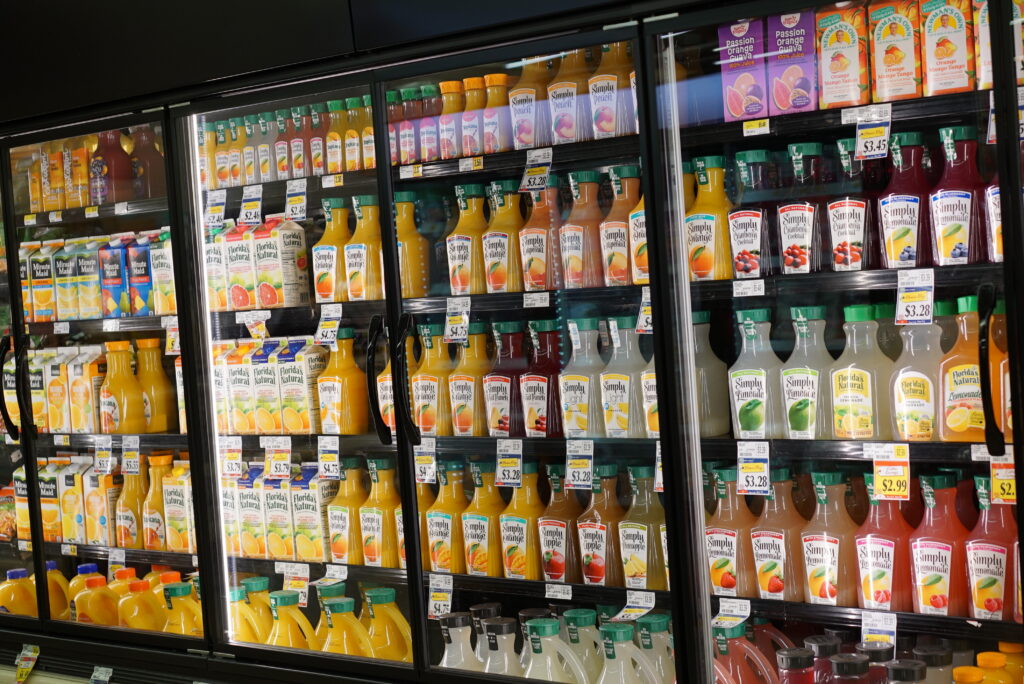Most grocery stores still rely on HFC-based refrigeration systems—centralized racks, distributed systems, self-contained units, and traditional single compressor setups. These systems are leak-prone and energy-intensive. The average leak rate in the food retail sector remains around 25% annually, contributing significantly to greenhouse gas emissions and driving up refrigerant and maintenance costs.

With the U.S. EPA implementing stricter rules under the American Innovation and Manufacturing (AIM) Act, the phasedown of HFCs is entering a critical stage. Many states also have HFC policies as well. The 2024–2028 allocation system for HFCs is already tightening supply, and new equipment with high-GWP refrigerants may be banned or significantly restricted within the next few years.

Bottom line: Installing new HFC-based equipment today risks locking in non-compliant infrastructure that won’t meet future regulatory thresholds.
Why Now Is the Time to Plan
The shift to low-GWP refrigerants—particularly natural refrigerants like CO₂ (R-744)—is well underway. CO₂ systems offer an effective long-term solution because they are:
- Non-toxic and non-flammable
- Not subject to phasedown or future bans
- Climate-resilient, with a GWP of just 1
The upfront cost for a CO₂ system replacement can exceed $4 million for a 55,000-square-foot store, but the benefits are substantial—and the long equipment lead times (6–12 months) mean early planning is essential.
Coordinating refrigeration upgrades with HVAC and other capital projects can help reduce total costs, minimize disruptions, and optimize energy savings across systems.
System Replacements Without Store Disruption
Because CO₂ operates under higher pressures than HFC systems, retrofitting existing components isn’t viable—full replacements are necessary. However, careful project staging makes it possible to keep stores open and operational.
Stores typically replace one or two cases at a time—often overnight—allowing for merchandise transfer, installation, and restocking within a few days. Meanwhile, most of the system build-out happens behind the scenes (on rooftops, backrooms, etc.), minimizing disruptions to staff and customers.
Pro tip: A single-phase full replacement project costs significantly less than spreading work over multiple years. It also reduces rental costs for temporary cold storage and minimizes staff impact.
How Upgrading Your Refrigeration Pays Off
Upgrading to CO₂-based refrigeration systems isn’t just about compliance. It delivers tangible business benefits:
- Lower energy costs: Replacing open HFC cases with CO₂ cases with doors can cut refrigeration energy use by up to 30%.
- Improved shopper comfort: Enclosed systems prevent cold air from spilling into aisles, addressing frequent customer complaints and improving dwell time in key departments.
- Better merchandising: Modern cases improve visibility and presentation, aligning with today’s packaging and lighting standards.
- Reduced heating load: Enclosed refrigeration means stores spend less on heating to offset aisle chill.
- Streamlined maintenance: CO₂ systems are becoming the new standard, and technician familiarity is growing rapidly.
It’s also a good time to reassess store layout. Do you need as much refrigerated space? Could a new footprint improve sales or shopper flow? These are critical questions to address during a full system upgrade.
Taper’s Strategic Approach
Taper helps retailers navigate the complexity of refrigeration transitions with a data-driven, portfolio-wide strategy. We evaluate:
- Stores with the highest leak rates or GWP refrigerants
- Locations with the highest refrigerant or energy costs
- Stores due for remodels or in need of equipment upgrades
- Flagship or high-traffic stores for early rollout
Our strategic facilities investment tool produces a prioritized store list, tailored work scopes, and a deployment schedule that aligns with your capital planning and operational goals.
We’ll also help you evaluate various deployment paths—from centralized CO₂ rack systems to condensing units for phased rollouts—and match the right approach to your business model.
Why Work with Taper?
Our expertise goes beyond equipment—we understand grocery operations inside and out. We’ve completed thousands of refrigeration projects across the country and partner closely with store teams to keep projects smooth, efficient, and invisible to customers.
Whether you’re looking to upgrade a single flagship or plan a multi-year, multi-store rollout, Taper can help you comply with regulations—and turn your refrigeration transition into a competitive advantage.
Ready to build your refrigeration roadmap? Contact Taper to explore our end-to-end solutions and schedule a portfolio consultation.
